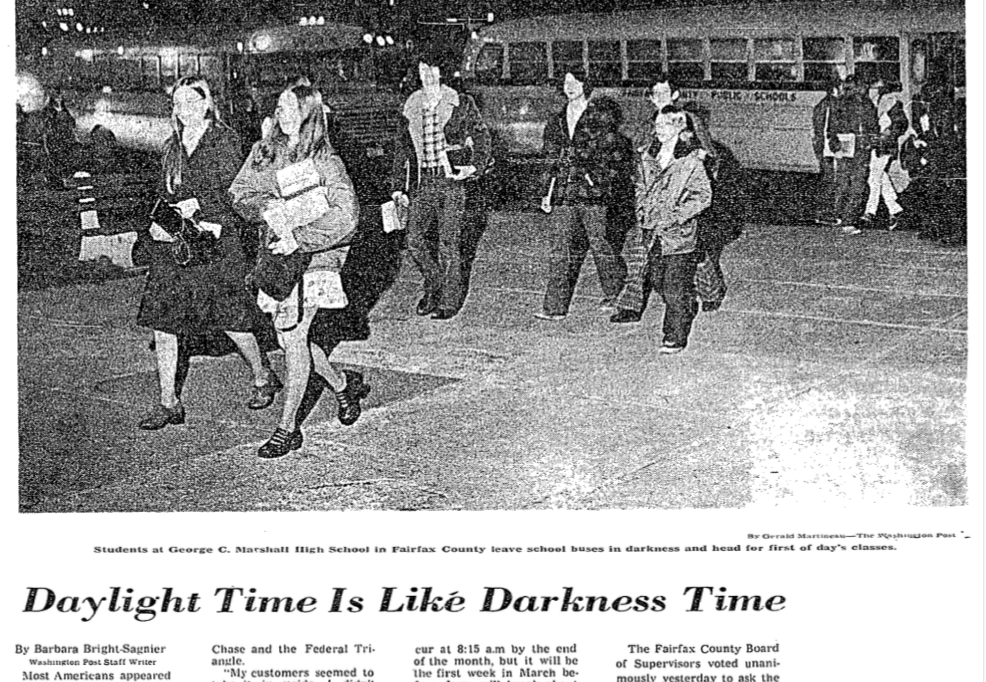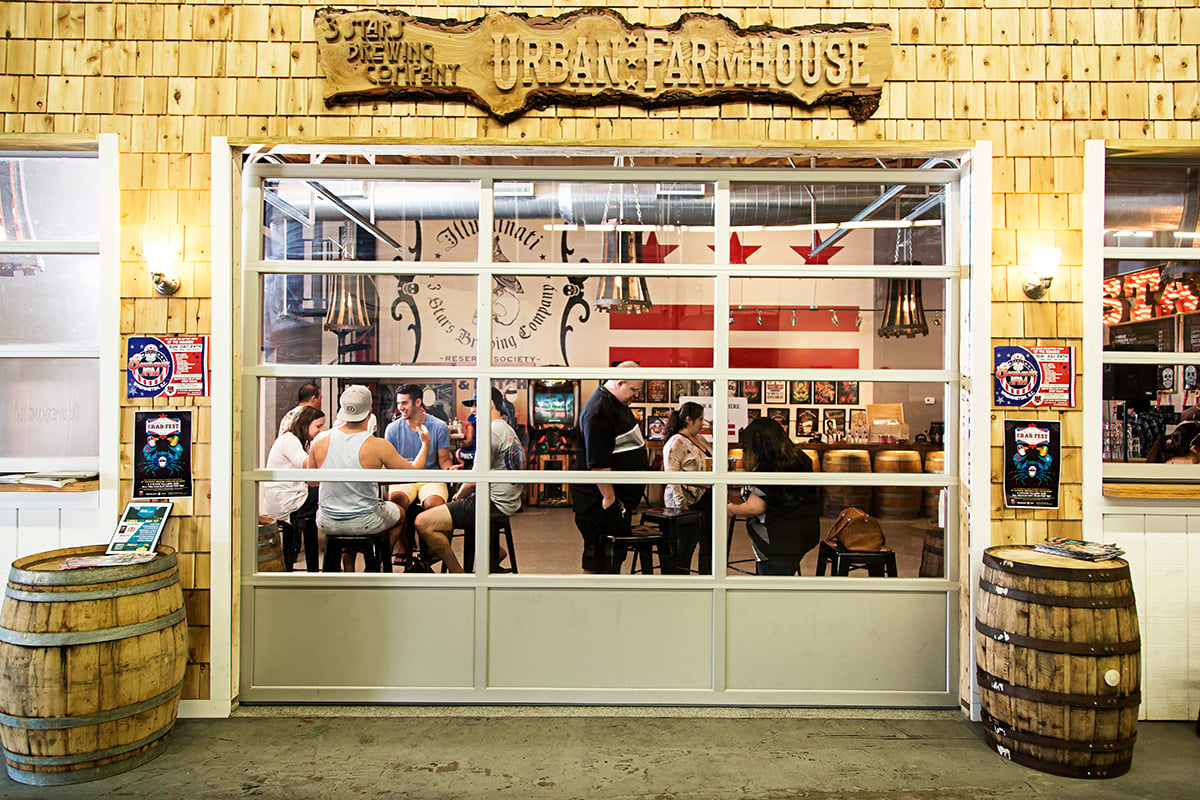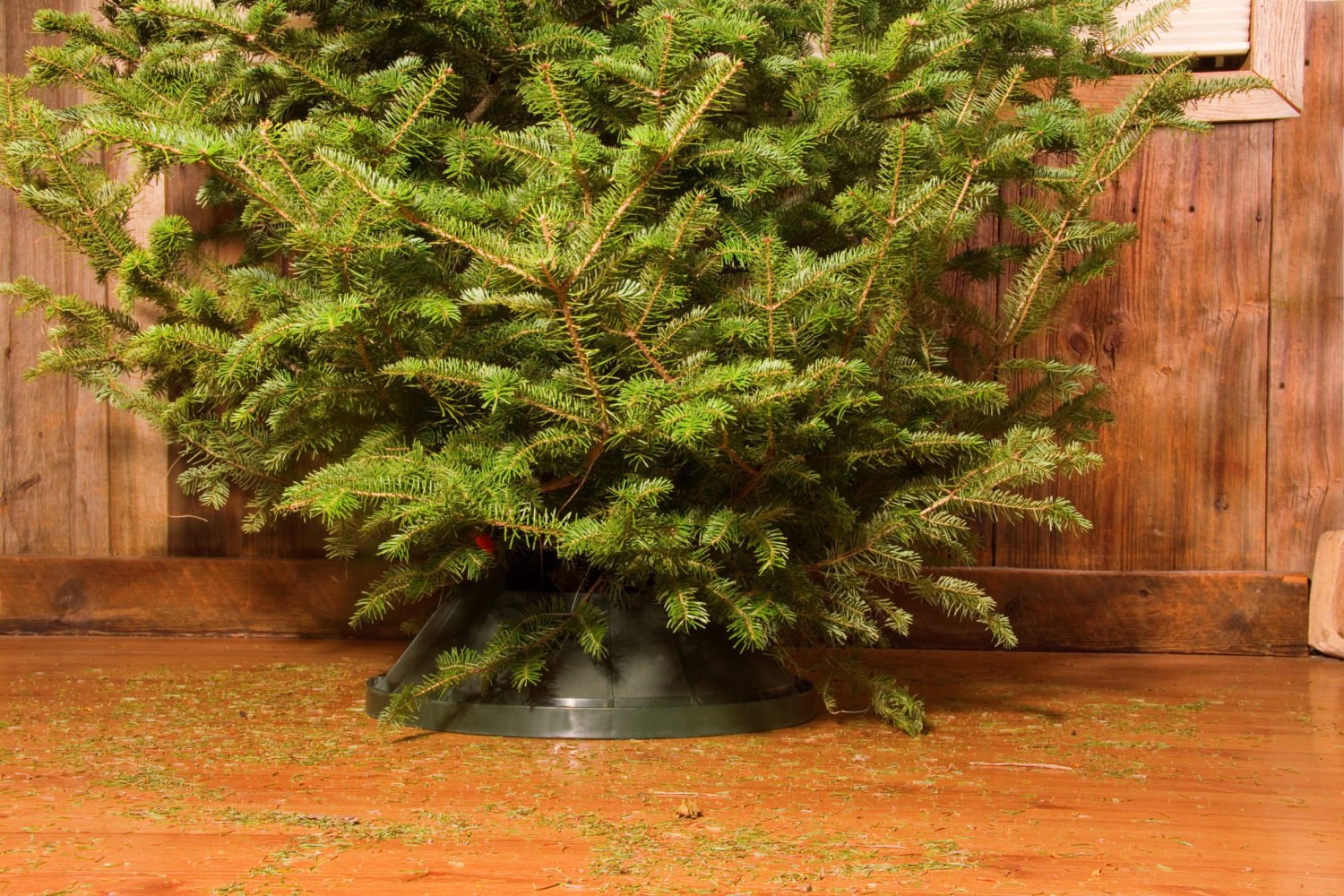It was a cold winter day at the National Zoo, and Lisa Stevens, curator of the Great Ape House, had placed a building closed sign at the entrance.
History was going to be made this day. Fifteen years earlier, a remarkable event had occurred in the building, and the saga now was coming full circle.
The silverback, or leader, of the zoo’s gorilla troop back in 1992 was a ten-year-old named Gus. Then, as now, there were two adult female gorillas, Mandara and Haloko. Mandara was a sleek ten-year-old who had come from the Milwaukee Zoo. Haloko, at 25, was at the upper end of breeding age; she had a standoffish manner that matched her pointy look, like some character from a George Lucas movie. Having not produced a baby in ten years, she was not considered a potential mother.
But on the morning of April 11, 1992, Lisa Stevens was stunned to find Haloko flat on her back, exhausted from giving birth. And her baby—to be named Baraka—was nursing happily at the breast of Mandara.
A year earlier, Mandara had given birth to her own little boy, Kejana—the first successful gorilla birth at the National Zoo in 20 years. Now, as Stevens took in the scene, she worried: Could Mandara continue to nurse both infants? Would one have to be raised by humans?
As Mandara nursed Baraka, her own infant, Kejana, climbed onto the exhausted Haloko and sat on her lap. From that point on, the two mothers in effect exchanged babies. Haloko took over raising Kejana, and Mandara raised Baraka. Zoologists from far and wide called to get reports on one of the most unusual captive-gorilla stories in the annals of zoos.
As the two boys grew up at the National Zoo, it seemed clear that Baraka, the son of Gus and Haloko, was dominant over his older half-brother Kejana. To those at the Ape House, the chest-beating Baraka seemed born to be a leader, a silverback.
In time, Gus and Mandy, as Mandara was known, produced two more gorillas—Kigali, a girl, and K’Tembe, another boy. With four offspring living there, Gus had effectively fathered himself out of the National Zoo.
The American Zoo and Aquarium Association in 1982 had created organizations of experts for the major species of zoo animals. Each committee was called a Species Survival Plan, or SSP. The gorilla SSP would meet each September at the association’s annual convention. In 1997 the group decided that Gus needed to expand his gene pool. The SSP didn’t want too many gorillas born of the same pairing. The members recommended that Gus and Kejana, father and son, be moved to the Disney Animal Kingdom in Orlando.
To replace Gus as silverback, Stevens put a male named Kuja, who had come from Milwaukee with Mandy, into the main group from a separate enclosure. Kuja had been dominated by Gus for so long that Stevens wondered about his ability to lead. Kuja was quirky—he was playful for a gorilla and loved to toss toys to his keepers. He would spend hours just rocking. Kuja had odd tastes in food—he was the only gorilla who wouldn’t eat corn on the cob.
Living in a smaller enclosure next to the main troop was Mopaya, a fearsome older gorilla known by the nickname Mopie. Despite the nickname, he weighed some 460 pounds and had a chilling stare. If Kuja couldn’t lead the group, Stevens figured, she would give Mopie a chance.
Stevens’s confidence in Kuja was rewarded. While he remained a bit of an oddball, he matured into the group’s leader, fathering two more boys—Kwame and Kojo—with Mandara. The family functioned well for more than a decade.
With Kuja in place as the silverback, there was no role for Baraka at the National Zoo. In 2004, the SSP recommended that Baraka be sent to the Henry Doorly Zoo in Omaha. It had invested in gorilla facilities and become known as a way station for male gorillas awaiting openings to be silverbacks at other zoos. So Baraka moved to Omaha, where he lived the solitary life of a young bachelor.
Left behind were Kuja, sons Kwame and Kojo, the adult females Mandara and Haloko, and Gus’s daughter, Kigali.
That was how the National Zoo’s gorilla troop stood a year ago, on March 31, 2006, when Senator Bill Frist arrived at the zoo’s veterinary hospital to perform a symbolic physical examination of Kuja. Cameras snapped pictures of the heart surgeon turned senator. Zoo officials saw Frist’s visits as good photo opportunities. The real work was done by the zoo’s consulting cardiologist for the primates, Steve Rosenthal, along with zoo veterinarian Suzan Murray.
Kuja passed his physical. But a few weeks later Stevens noticed that he had developed a cough and his activity had declined. He began leaving his food untouched and seemed uninterested even in the popcorn strewn about by keepers. “He was clearly ill,” Stevens says.
On June 20 Murray conducted an ultrasound of Kuja’s heart. It was pumping blood at a fraction of the normal rate. At 23, Kuja was suffering from heart disease. Medications were prescribed, but getting Kuja to take them was hard because of his poor appetite and unpredictable tastes.
“Any time we could get medicine in him, it was a major accomplishment,” Stevens says. One of Kuja’s peculiarities was that he liked to eat things that were colored red. Zoo staffers put the pills in red casings, and sometimes he would take them.
As Kuja’s strength waned, the only occupants of the Great Ape House who didn’t appear sad were his sons, Kwame and Kojo, who began taking swats at their weakened father. When Kuja was moved to a quarantine area, the boys flexed their muscles and beat their chests.
By June 30 Kuja had stopped eating.
There seemed to be one chance to save him. In Alabama, a gorilla named Babec had survived after a specialized crew from the University of Alabama at Birmingham successfully implanted something similar to a pacemaker.
“We knew Kuja was in heart failure,” says Stevens. “We weighed all the options and brought in consultants and experts.” Zoo director John Berry kept a close eye on the situation. “We knew it was high risk,” he says. “But the more we heard about it, we became increasingly optimistic.”
The University of Alabama crew was led by Dr. G. Neal Kay, who had successfully treated Babec. He planned to implant a pacemaker to resynchronize Kuja’s heart and restore its ability to contract.
Kuja was sedated by a dart and moved to the zoo hospital’s operating room. A wooden operating table was built because surgeons feared that a standard metal one would interfere with the electrical pacemaker.
As Stevens and Berry watched on a monitor outside the operating room, the doctors anesthetized Kuja and made an incision through which they could reach his heart muscles. But shortly after they attached the first lead of the pacemaker to the ventricle chamber, Kuja’s heart stopped. For nearly 30 minutes, the doctors attempted to shock him back to life. But the silverback was dead.
After tissue samples were saved for the pathology report, Kuja was sent out for rendering.
The behavior of the two young gorillas—Kwame and Kojo—had convinced Stevens that the adult void in the Great Ape House had to be filled. Notwithstanding their chest-beating, they were too young for either to take on the job of silverback. “They needed leadership,” Stevens says.
The dark brown hair of male gorillas begins to turn white around the age of 12, marking their transition into adulthood. Male gorillas begin to breed at that age. Females, whose hair remains dark, begin breeding around age ten. Gorillas live in families that can range in size from five to 25. Each family is dominated by a male silverback who rules either until death or until he is supplanted by a younger, stronger silverback. Males who don’t become dominant usually go off to live by themselves or with other males.
The dominant silverback mediates conflicts, defends the group, and directs its movement from one place to another. When Kwame and Kojo reach silverback age, they will leave the National Zoo and go perhaps to another zoo family whose leader has died. Silverbacks that don’t have families are often placed in small “bachelor” groups of males.
Lisa Stevens knew it would not be healthy for her gorilla family to be without a legitimate silverback too long. Kwame at the time was only six, and Kojo only four.
As she pondered the next step, Stevens put in calls to the Memphis Zoo, where Kuja had been born, and to the Milwaukee Zoo, where he had lived before coming to Washington, to let them know the news.
Stevens thought it would be best, after Kuja’s month long illness, to get Mopie into the family as quickly as possible. Even though Mopie had lived for several years with Haloko, Stevens followed procedures for integrating a new silverback into a troop. She was most concerned about the two youngsters, Kojo and Kwame, the latter almost certainly a future silverback. Stevens closed the Ape House to the public while she watched how Mopie would interact with the clan.
No sooner had Mopie entered than all hell broke loose. Mandara and her offspring, Kwame, Kojo, and Kigali, began running and swatting at the interloper. “There was a lot of chasing,” Stevens says. In the midst of it all, Mopie collapsed, falling face-forward onto the floor.
Stevens put in an emergency call for the vets while she and her staff tried to keep the other gorillas away. It took nearly half an hour to get them out and shut the doors so the vets could examine Mopie.
They were too late—Mopie was dead. In the space of three days, Stevens had lost two of the animals closest to her. And the gorilla troop was leaderless.
“We were just in shock,” Berry recalls. “Poor Lisa and the whole crew, it shook them to their roots losing two gorillas in three days. There is an emotional bond between a keeper and an animal that is difficult for people who don’t work around animals to understand.”
Stevens says she grieved as intensely for Kuja and Mopie as she had for her 84-year-old father, who had been buried at Arlington National Cemetery on July 11.
Although the zoo has been criticized in recent years for the deaths of a lot of animals, scientists observed that the heart problems of Kuja and Mopie seemed to be part of a national trend, possibly having to do with the diet fed to captive gorillas. They were the fourth and fifth US gorillas to die of heart disease last year. Scientists have no definitive answers but believe the deaths are related to either the stress of captivity or perhaps the unavailability of some natural foods that gorillas in the wild can eat. The details of Mopie’s death were added to the pages of documents being studied to discover the cause of heart disease among the gorillas of North America.
Berry says more bad publicity about the deaths of zoo animals was the least of his worries. He knew the staff had done everything possible to save Kuja and that Mopie’s death was unpredictable.
“Who’s to say Mopie wouldn’t have had the same massive coronary that week anyway?” he says. “All we can do is provide the highest-quality care and give it our best shot. That is what we did.”
Early in July, zoo officials released the news that a second gorilla had died and waited for a storm of publicity. It didn’t come.
Stevens worried more about the gorillas than about public reaction. She now was left with a truncated family composed of three females and two young males. She put in a call to Dan Wharton, then the chair of the Species Survival Plan in New York City, and told him everything that had happened.
“We are going to need a new silverback,” she said, noting that the two boys already were acting surly and fighting for supremacy. “They need leadership.”
Wharton said the SSP would meet in September and could make a decision then.
Looking through a list of the 362 gorillas in captivity in North America, Stevens’s eyes stopped at the name of Baraka, still living by himself in Omaha after two years.
It would be rare to bring a gorilla who had been a junior member of a troop back to be the silverback, but it seemed worth a try. The move would have to be approved by the SSP. Baraka would not be able to breed with Kigali, his half-sister, or Haloko, his mother. But he had no genetic link to Mandara, so that would be fine.
In September the SSP met in Tampa and approved the transfer of Baraka from Omaha to Washington. Stevens told zookeeper Mark Zajac to fly to Omaha and bring Baraka back.
In Omaha, Zajac helped the zoo staff load Baraka into a square white truck designed for gorilla transport and, with three Omaha zoo staffers, accompanied him on the ride back, giving him treats at every rest stop.
Baraka fared well during the 20-hour drive from Nebraska. In Washington the doors of the truck were opened and a forklift moved his cage into the zoo’s quarantine area for the next 30 days.
Zoo staff did not have to wonder long whether Baraka would remember his old home. Before leaving Washington, Baraka had been sedated with a dart gun by a zoo vet named Carlos Sanchez. When Sanchez stopped by to see his old friend, Baraka erupted in a tantrum that included throwing things at the vet.
“Once a gorilla is darted, they don’t forget it,” Stevens says.
When the 30-day quarantine was up, it was time to reintroduce Baraka to the other gorillas. Stevens put the building closed sign at the entrance of the Great Ape House. Baraka was reintroduced first to his birth mother, Haloko, now 39 years old. Baraka made several rushes by her to assert his dominance; all were met with motherly swats of disapproval.
Next Stevens brought his sister, Kigali, into the act. Within minutes they seemed to have reestablished their old relationship. While Haloko kept her distance from her 400-pound son, Kigali showed no fear, and before long all three were lying on their backs, dreaming gorilla dreams.
The next day was Kwame’s turn. Stevens was most concerned about how Baraka would get along with the two boys—and how long Kwame and Kojo would stay in the main troop. She could put them in their own bachelor group if need be. But for now the introductions went smoothly.
Finally it came time for Baraka to face Mandara, the gorilla who had nursed him as an infant and delivered half a dozen babies of her own.
The initial meeting was intense. Baraka and Mandara hooted and chased each other around for hours, convincing Stevens that they should be separated for a while. After a week off, she put them back together again. This time they calmed down. The family was back together. Baraka was home.
This spring and summer the family is on display for all to see.
National editor Kim Eisler has been writing about the National Zoo for more than a decade. His 1995 article on the formation of Washington’s gorilla family, “Gorillas Just Want to Have Fun,” can be found here.














